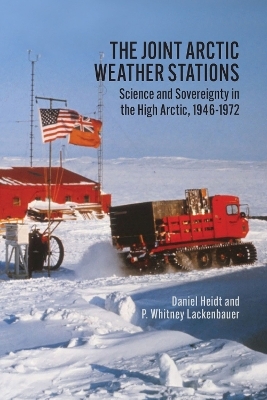
The Joint Arctic Weather Stations
University of Calgary Press (Verlag)
978-1-77385-257-7 (ISBN)
The Joint Arctic Weather Stations were five meteorological and scientific monitoring stations constructed at Resolute, Eureka, Mould Bay, Isachsen, and Alert with the cooperation of the Canadian Department of Transport's meteorological branch and the United States Weather Bureau. From 1947 to the early 1970s as few as four Canadians and four Americans worked and lived at each of the four satellite stations, observing and collecting scientific data.This is the first systematic account of the Joint Arctic Weather Stations, a project that profoundly shaped state activates and scientific inquiry in the Arctic Archipelago. Drawing on extensive archival evidence, unpublished personal memoirs, and interviews with former employees, The Joint Arctic Weather Stations analyzes the diplomatic, scientific, social, military, and environmental dimensions of the program alongside each station as a nexus of state planning and personal agency.
Contrary to previous scholarship, The Joint Arctic Weather Stations reveals that Canadian officials sought—and achieved—a firm policy that afforded effective control of Canada's Arctic while enjoying the advantages of American contribution to the joint meteorological program. It explores the changing ways science was conducted over time and how the details of everyday life at remote stations, from the climate to leisure activities to debates over alcohol, hunting, and leadership, shaped the program's effectiveness. An exploration of the full duration of the Joint Arctic Weather Stations from high-level planning and diplomacy to personal interactions in the stations makes this book an essential exploration of collaborative polar science in the North American Arctic.
Daniel Heidt is an independent scholarly specializing in Canadian Arctic Cold War and Canadian political history. He is the editor of Reconsidering Confederation, Two Years Below the Horn, and Cold Science. P. Whitney Lackenbauer is Canada Research Chair in the Study of the Canadian North and a Professor in the School for the Study of Canada at Trent University. He is network lead of the North American and Arctic Defense and Security Network and has authored and edited over fifty books.
Introduction
Chapter 1 Background: The Long Build-up
Chapter 2 Negotiating JAWS, 1945-47
Chapter 3 Situating the First Stations, 1947-48
Chapter 4 Finishing the Network, 1948-50
Chapter 5 Who Did the Stations Need . . . and Who Did They Get?
Chapter 6 Science at the Stations
Chapter 7 The Seasonal Cycle
Chapter 8 Getting Along at the Top of the World
Chapter 9 Canadianization: Getting Out of Joint?
Conclusion
Bibliography
| Erscheinungsdatum | 21.04.2022 |
|---|---|
| Verlagsort | Calgary |
| Sprache | englisch |
| Maße | 149 x 231 mm |
| Gewicht | 407 g |
| Themenwelt | Geisteswissenschaften ► Geschichte ► Regional- / Ländergeschichte |
| Naturwissenschaften ► Geowissenschaften ► Meteorologie / Klimatologie | |
| ISBN-10 | 1-77385-257-4 / 1773852574 |
| ISBN-13 | 978-1-77385-257-7 / 9781773852577 |
| Zustand | Neuware |
| Haben Sie eine Frage zum Produkt? |
aus dem Bereich


